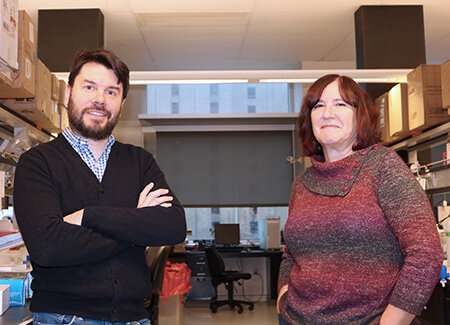A new study suggests that human neurons may have more computing power than once thought.




Live coverage of SpaceX’s preparations for the next Falcon 9 rocket launch from pad 39A at NASA’s Kennedy Space Center in Florida. The mission will loft an unpiloted Crew Dragon spacecraft on a high-altitude test of the capsule’s launch abort system. Text updates will appear automatically below. Follow us on Twitter.

Scientists at Rutgers University-Newark have discovered that when a key protein needed to generate new brain cells during prenatal and early childhood development is missing, part of the brain goes haywire—causing an imbalance in its circuitry that can lead to long-term cognitive and movement behaviors characteristic of autism spectrum disorder.
“During brain development, there is a coordinated series of events that have to occur at the right time and the right place in order to establish the appropriate number of cells with the right connections,” said Juan Pablo Zanin, Rutgers-Newark research associate and lead author on a paper published in the Journal of Neuroscience.” Each of these steps is carefully regulated and if any of these steps are not regulated correctly, this can impact behavior.”
Zanin has been working with Wilma Friedman, professor of cellular neurobiology in the Department of Biological Sciences, studying the p75NTR protein—needed to regulate cell division—to determine its exact function in brain development, gain a better understanding of how this genetic mutation could cause brain cells to die off and discover whether there is a genetic link to autism or neurological diseases like Alzheimer’s.



Once the plastic road is done, it will look just like any other asphalt road. But the advantage is, this new road is more flexible. It can better sustain heat and cold. It will also stand stronger against elemental damages. And since this is an enhanced asphalt form, it will last ten times longer and is proven to be 60% stronger.
This is definitely good news for drivers and commuters. Roads stay longer which means there will be fewer cracks and potholes!
Particles can carry information securely because intercepting them would alter the message and alert the receiver or sender.

Dunwoody officials said Thursday that no data was compromised during the ransomware attack, which was detected on Christmas Eve and is now under investigation by the FBI. The intrusion was quickly identified by staff, which worked with the city’s computer security contractors at InterDev to shut down servers and disconnect computers in order to limit the impact of the attack.
“As soon as we detected a problem, we took immediate steps to protect the city’s infrastructure,” Ashley Smith, InterDev’s director of government services, said in a news release. “Data back-ups were used to fully restore systems with no loss.”
Dunwoody police Chief Billy Grogan said the attackers demanded a ransom be paid in bitcoin, a digital currency. He declined to reveal the amount requested but said the city did not pay.